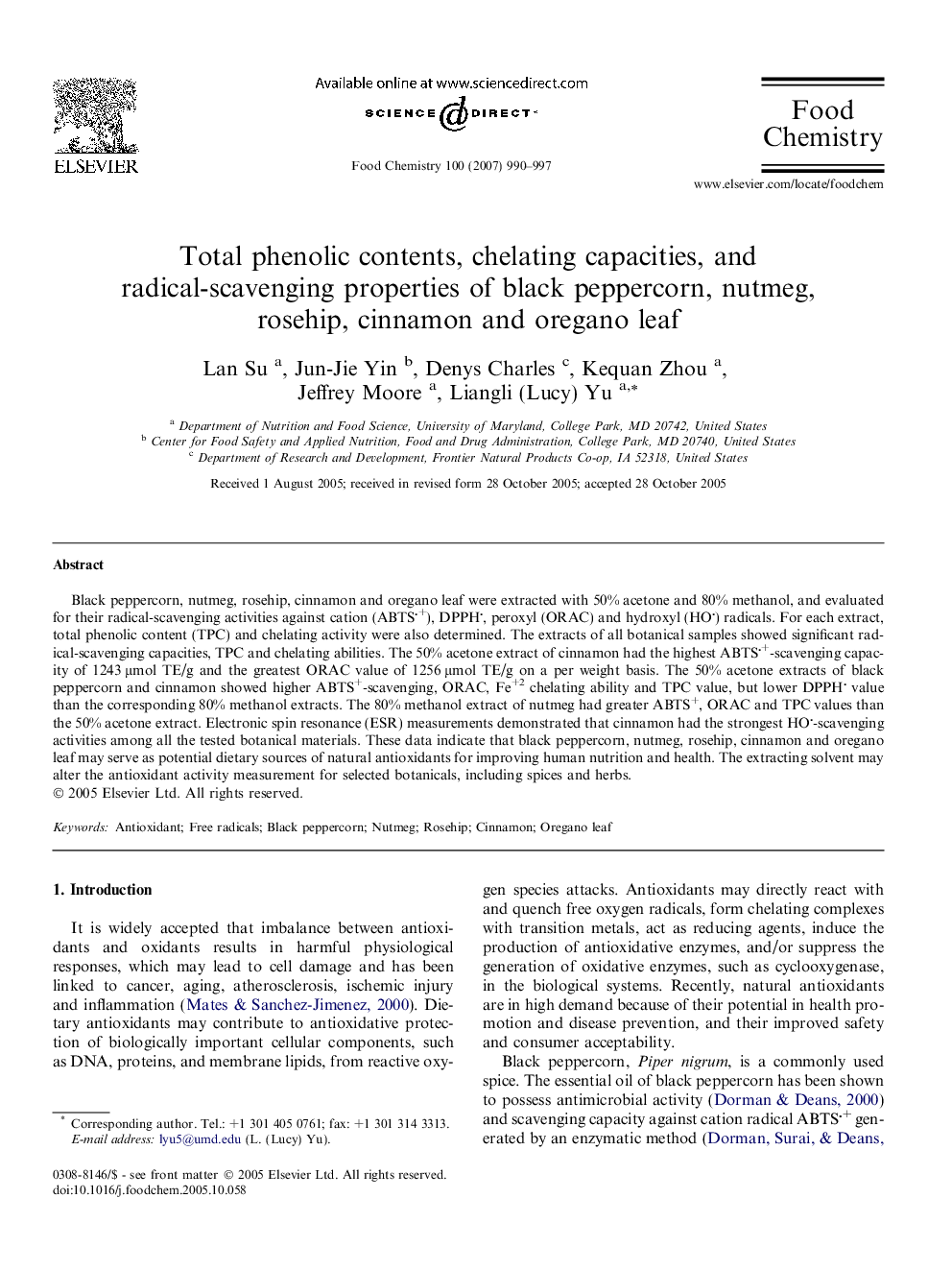| Article ID | Journal | Published Year | Pages | File Type |
|---|---|---|---|---|
| 1190879 | Food Chemistry | 2007 | 8 Pages |
Black peppercorn, nutmeg, rosehip, cinnamon and oregano leaf were extracted with 50% acetone and 80% methanol, and evaluated for their radical-scavenging activities against cation (ABTS+), DPPH, peroxyl (ORAC) and hydroxyl (HO) radicals. For each extract, total phenolic content (TPC) and chelating activity were also determined. The extracts of all botanical samples showed significant radical-scavenging capacities, TPC and chelating abilities. The 50% acetone extract of cinnamon had the highest ABTS+-scavenging capacity of 1243 μmol TE/g and the greatest ORAC value of 1256 μmol TE/g on a per weight basis. The 50% acetone extracts of black peppercorn and cinnamon showed higher ABTS+-scavenging, ORAC, Fe+2 chelating ability and TPC value, but lower DPPH value than the corresponding 80% methanol extracts. The 80% methanol extract of nutmeg had greater ABTS+, ORAC and TPC values than the 50% acetone extract. Electronic spin resonance (ESR) measurements demonstrated that cinnamon had the strongest HO-scavenging activities among all the tested botanical materials. These data indicate that black peppercorn, nutmeg, rosehip, cinnamon and oregano leaf may serve as potential dietary sources of natural antioxidants for improving human nutrition and health. The extracting solvent may alter the antioxidant activity measurement for selected botanicals, including spices and herbs.
